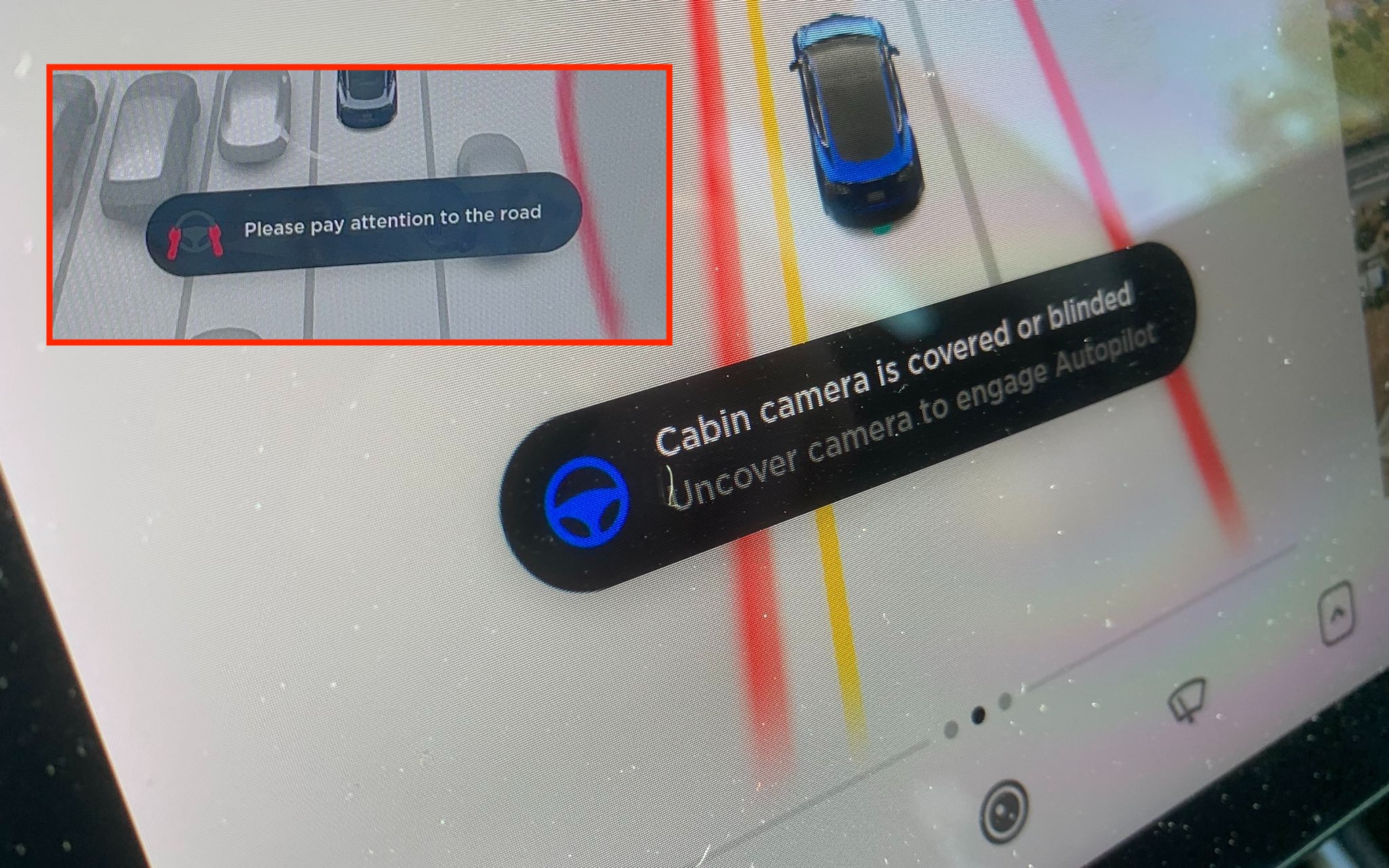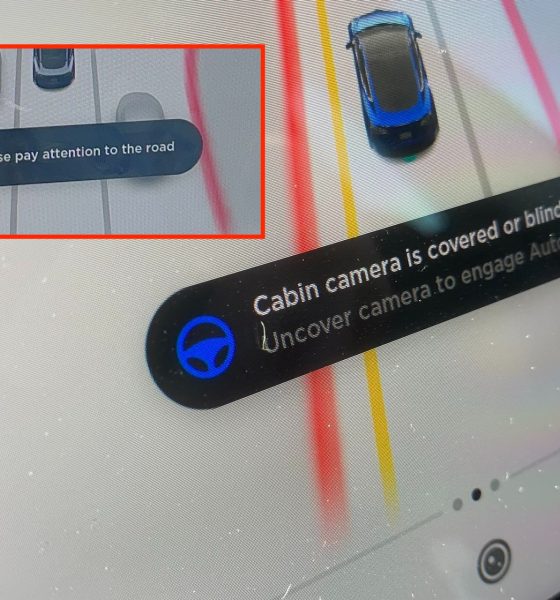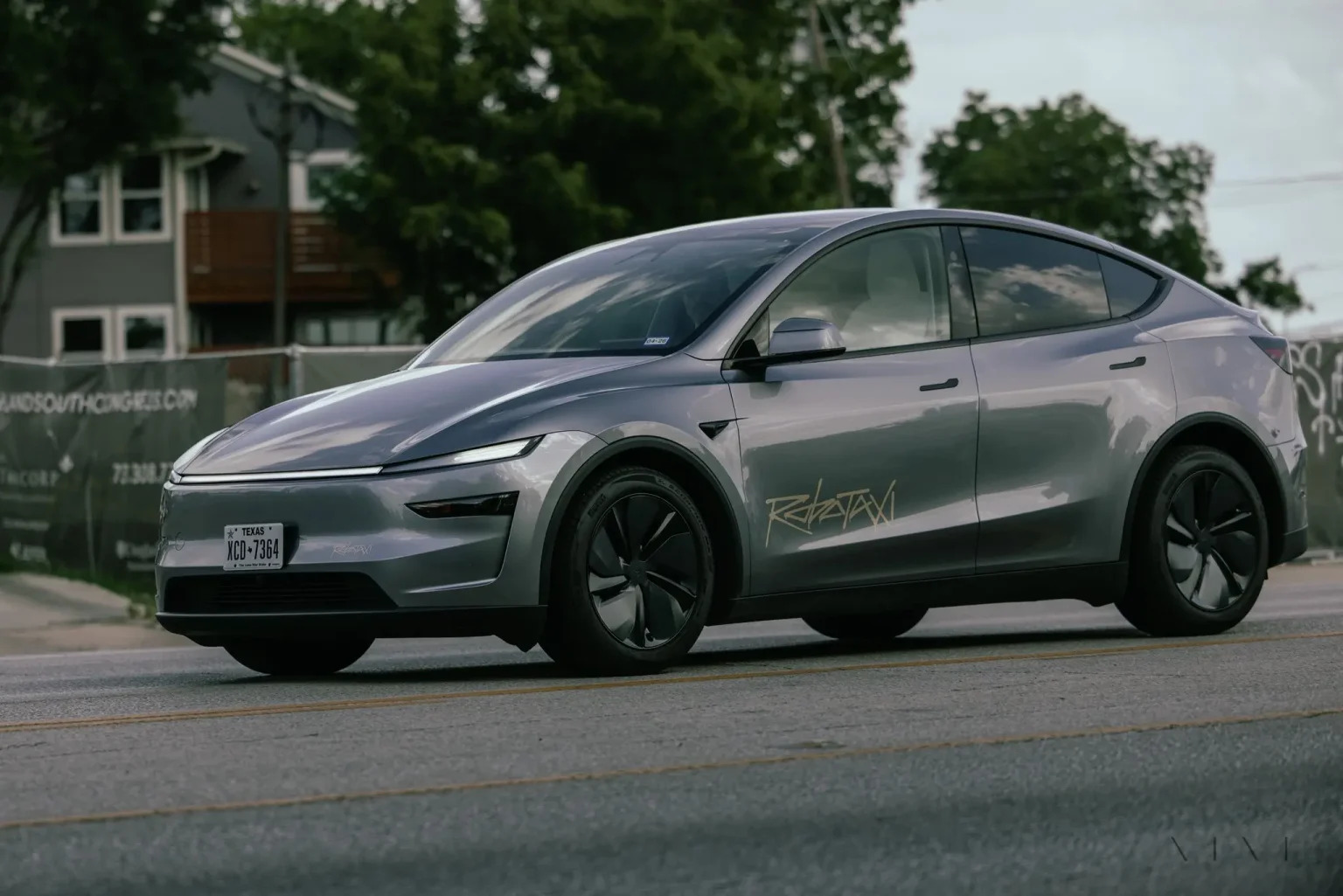

News
Tesla’s camera-based driver monitoring system exists; pretending it doesn’t makes roads less safe
Tesla’s FSD Beta program has begun its expansion to more users. And while the system is only being distributed today to drivers with a perfect Safety Score, the advanced driver-assist system is expected to be released to users with a rating of 99 and below in the near future. True to form, with the expansion of FSD Beta also came the predictable wave of complaints and pearl-clutching from critics, some of whom still refuse to acknowledge that Tesla is now utilizing its vehicles’ in-cabin camera to bolster its driver-monitoring systems.
Just recently, the NHTSA sent a letter to Tesla asking for an explanation why the company rolled out some improvements to Autopilot without issuing a safety recall. According to the NHTSA, Tesla should have filed for a recall notice if the company found a “safety defect” on its vehicles. What was missed by the NHTSA was that the Autopilot update, which enabled the company’s vehicles to slow down and alert their drivers when an emergency vehicle is detected, was done as a proactive measure, not as a response to a defect.
Consumer Reports Weighs In
Weighing in on the issue, Consumer Reports argued that ultimately, over-the-air software updates do not really address the main weakness of Teslas, which is driver-monitoring. The magazine admitted that Tesla’s driver-assist system’s object detection and response is better than comparable systems, but Kelly Funkhouser, head of connected and automated vehicle testing for Consumer Reports, argued that it is this very reason why the magazine has safety concerns with Tesla’s cars.
“In our tests, Tesla continues to perform well at object detection and response compared to other vehicles. It’s actually because the driver assistance system performs so well that we are concerned about overreliance on it. The most important change Tesla needs to make is to add safeguards—such as an effective direct driver monitoring system—to ensure the driver is aware of their surroundings and able to take over in these types of scenarios,” Funkhouser said.
Jake Fisher, senior director of Consumer Reports‘ Auto Test Center, also shared his own take on the issue, particularly around some Autopilot crashes involving stationary emergency vehicles on the side of the road. “CR’s position is that crashes like these can be avoided if there is an effective driver monitoring system, and that’s the underlying problem here,” Fisher said, adding that over-the-air software updates are typically not sent to address defects.
Tesla’s camera-based DMS
Funkhouser and Fisher’s reference to direct driver monitoring systems is interesting because the exact feature has been steadily rolling out to Tesla’s vehicles over the past months. It is quite strange that Consumer Reports seems unaware about this, considering that the magazine has Teslas in its fleet. Tesla, after all, has been rolling out its camera-based driver monitoring system to its fleet since late May 2021. A rollout of the camera-based system to radar-equipped vehicles was done in the previous quarter.
Tesla’s Release Notes for its camera-based driver monitoring function describes how the function works. “The cabin camera above your rearview mirror can now detect and alert driver inattentiveness while Autopilot is engaged. Camera data does not leave the car itself, which means the system cannot save or transmit information unless data sharing is enabled,” Tesla noted in its Release Notes.
What is interesting is that Consumer Reports‘ Jake Fisher was made aware of the function when it launched last May. In a tweet, Fisher even noted that the camera-based system was not “just about preventing abuse;” it also “has the potential to save lives by preventing distraction.” This shows that Consumer Reports, or at least the head of its Auto Test Center, has been fully aware that Tesla’s in-cabin cameras are now steadily being used for driver monitoring purposes. This makes his recent comments about Tesla’s lack of driver monitoring quite strange.
Legacy or Bust?
That being said, Consumer Reports appears to have a prepared narrative once it acknowledges the existence of Tesla’s camera-based driver-monitoring system. Back in March, the magazine posted an article criticizing Tesla for its in-cabin cameras, titled “Tesla’s In-Car Cameras Raise Privacy Concerns.” In the article, the magazine noted that the EV maker could simply be using its in-cabin cameras for its own benefit. “
“We have already seen Tesla blaming the driver for not paying attention immediately after news reports of a crash while a driver is using Autopilot. Now, Tesla can use video footage to prove that a driver is distracted rather than addressing the reasons why the driver wasn’t paying attention in the first place,” Funkhouser said.
Considering that Consumer Reports seems to be critical of Tesla’s use (or non-use for that matter) of its vehicles’ in-cabin cameras, it appears that the magazine is arguing that the only effective and safe driver monitoring systems are those utilized by veteran automakers like General Motors for its Super Cruise system. However, even the advanced eye-tracking technology used by GM for Super Cruise, which Consumer Reports overtly praises, has been proven to be susceptible to driver abuse.
This was proven by Car and Driver, when the motoring publication fooled Super Cruise into operating without a driver using a pair of gag glasses with eyes painted on them. One could easily criticize Car and Driver for publicly showcasing a vulnerability in Super Cruise’s driver monitoring systems, but one has to remember that Consumer Reports also published an extensive guide on how to fool Tesla’s Autopilot into operating without a driver using a series of tricks and a defeat device.
Salivating for the first FSD Beta accident
What is quite unfortunate amidst the criticism surrounding the expansion of FSD Beta is the fact that skeptics seem to be salivating for the first accident involving the advanced driver-assist system. Fortunately, Tesla seems to be aware of this, which may be the reason why the Beta is only being released to the safest drivers in the fleet. Tesla does plan on releasing the system to drivers with lower safety scores, but it would not be a surprise if the company ends up adopting an even more cautious approach when it does so.
That being said, incidents on the road are inevitable, and one can only hope that when something does happen, it would not be too easy for an organization such as Consumer Reports to run away with a narrative that echoes falsehoods that its own executives have recognized publicly — such as the potential benefits of Tesla’s camera-based driver monitoring system. Tesla’s FSD suite and Autopilot are designed as safety features, after all, and so far, they are already making the company’s fleet of vehicles less susceptible to accidents on the road. Over time, and as more people participate in the FSD Beta program, Autopilot and Full Self-Driving would only get safer.
Tesla is not above criticism, of course. There are several aspects of the company that deserves to be called out. Service and quality control, as well as the treatment of longtime Tesla customers who purchased FSD cars with MCU1 units, are but a few of them. However, it’s difficult to defend the notion that FSD and Autopilot are making the roads less safe. Autopilot and FSD have already saved numerous lives, and they have the potential to save countless more once they are fully developed. So why block their development and rollout?
Don’t hesitate to contact us with news tips. Just send a message to tips@teslarati.com to give us a heads up.

Elon Musk
SpaceX issues statement on Starship V3 Booster 18 anomaly
The incident unfolded during gas-system pressure testing at the company’s Massey facility in Starbase, Texas.

SpaceX has issued an initial statement about Starship Booster 18’s anomaly early Friday. The incident unfolded during gas-system pressure testing at the company’s Massey facility in Starbase, Texas.
SpaceX’s initial comment
As per SpaceX in a post on its official account on social media platform X, Booster 18 was undergoing gas system pressure tests when the anomaly happened. Despite the nature of the incident, the company emphasized that no propellant was loaded, no engines were installed, and personnel were kept at a safe distance from the booster, resulting in zero injuries.
“Booster 18 suffered an anomaly during gas system pressure testing that we were conducting in advance of structural proof testing. No propellant was on the vehicle, and engines were not yet installed. The teams need time to investigate before we are confident of the cause. No one was injured as we maintain a safe distance for personnel during this type of testing. The site remains clear and we are working plans to safely reenter the site,” SpaceX wrote in its post on X.
Incident and aftermath
Livestream footage from LabPadre showed Booster 18’s lower half crumpling around the liquid oxygen tank area at approximately 4:04 a.m. CT. Subsequent images posted by on-site observers revealed extensive deformation across the booster’s lower structure. Needless to say, spaceflight observers have noted that Booster 18 would likely be a complete loss due to its anomaly.
Booster 18 had rolled out only a day earlier and was one of the first vehicles in the Starship V3 program. The V3 series incorporates structural reinforcements and reliability upgrades intended to prepare Starship for rapid-reuse testing and eventual tower-catch operations. Elon Musk has been optimistic about Starship V3, previously noting on X that the spacecraft might be able to complete initial missions to Mars.
Investor's Corner
Tesla analyst maintains $500 PT, says FSD drives better than humans now
The team also met with Tesla leaders for more than an hour to discuss autonomy, chip development, and upcoming deployment plans.

Tesla (NASDAQ:TSLA) received fresh support from Piper Sandler this week after analysts toured the Fremont Factory and tested the company’s latest Full Self-Driving software. The firm reaffirmed its $500 price target, stating that FSD V14 delivered a notably smooth robotaxi demonstration and may already perform at levels comparable to, if not better than, average human drivers.
The team also met with Tesla leaders for more than an hour to discuss autonomy, chip development, and upcoming deployment plans.
Analysts highlight autonomy progress
During more than 75 minutes of focused discussions, analysts reportedly focused on FSD v14’s updates. Piper Sandler’s team pointed to meaningful strides in perception, object handling, and overall ride smoothness during the robotaxi demo.
The visit also included discussions on updates to Tesla’s in-house chip initiatives, its Optimus program, and the growth of the company’s battery storage business. Analysts noted that Tesla continues refining cost structures and capital expenditure expectations, which are key elements in future margin recovery, as noted in a Yahoo Finance report.
Analyst Alexander Potter noted that “we think FSD is a truly impressive product that is (probably) already better at driving than the average American.” This conclusion was strengthened by what he described as a “flawless robotaxi ride to the hotel.”
Street targets diverge on TSLA
While Piper Sandler stands by its $500 target, it is not the highest estimate on the Street. Wedbush, for one, has a $600 per share price target for TSLA stock.
Other institutions have also weighed in on TSLA stock as of late. HSBC reiterated a Reduce rating with a $131 target, citing a gap between earnings fundamentals and the company’s market value. By contrast, TD Cowen maintained a Buy rating and a $509 target, pointing to strong autonomous driving demonstrations in Austin and the pace of software-driven improvements.
Stifel analysts also lifted their price target for Tesla to $508 per share over the company’s ongoing robotaxi and FSD programs.
Elon Musk
SpaceX Starship Version 3 booster crumples in early testing
Photos of the incident’s aftermath suggest that Booster 18 will likely be retired.

SpaceX’s new Starship first-stage booster, Booster 18, suffered major damage early Friday during its first round of testing in Starbase, Texas, just one day after rolling out of the factory.
Based on videos of the incident, the lower section of the rocket booster appeared to crumple during a pressurization test. Photos of the incident’s aftermath suggest that Booster 18 will likely be retired.
Booster test failure
SpaceX began structural and propellant-system verification tests on Booster 18 Thursday night at the Massey’s Test Site, only a few miles from Starbase’s production facilities, as noted in an Ars Technica report. At 4:04 a.m. CT on Friday, a livestream from LabPadre Space captured the booster’s lower half experiencing a sudden destructive event around its liquid oxygen tank section. Post-incident images, shared on X by @StarshipGazer, showed notable deformation in the booster’s lower structure.
Neither SpaceX nor Elon Musk had commented as of Friday morning, but the vehicle’s condition suggests it is likely a complete loss. This is quite unfortunate, as Booster 18 is already part of the Starship V3 program, which includes design fixes and upgrades intended to improve reliability. While SpaceX maintains a rather rapid Starship production line in Starbase, Booster 18 was generally expected to validate the improvements implemented in the V3 program.
Tight deadlines
SpaceX needs Starship boosters and upper stages to begin demonstrating rapid reuse, tower catches, and early operational Starlink missions over the next two years. More critically, NASA’s Artemis program depends on an on-orbit refueling test in the second half of 2026, a requirement for the vehicle’s expected crewed lunar landing around 2028.
While SpaceX is known for diagnosing failures quickly and returning to testing at unmatched speed, losing the newest-generation booster at the very start of its campaign highlights the immense challenge involved in scaling Starship into a reliable, high-cadence launch system. SpaceX, however, is known for getting things done quickly, so it would not be a surprise if the company manages to figure out what happened to Booster 18 in the near future.








